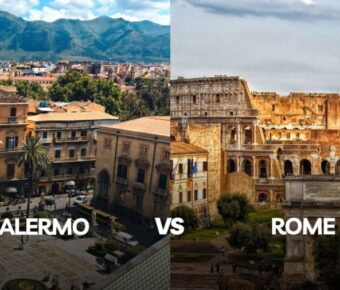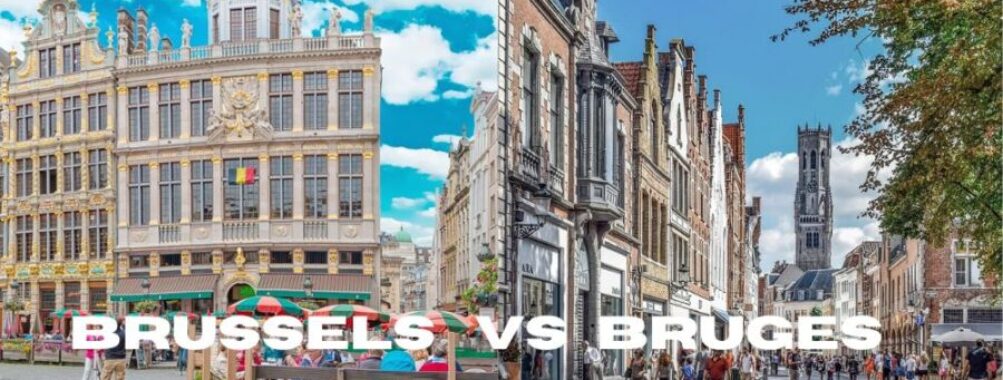
Brussels vs Bruges: Which Belgian City Offers the Best Medieval Charm in 2025
Belgium‘s two most famous cities both offer incredible experiences, but they feel worlds apart. Brussels stands as the bustling capital and heart of European politics, while Bruges feels like stepping into a fairytale with its medieval streets and winding canals.
Most visitors prefer Bruges for a 2-3 day stay since its compact size, preserved architecture, and romantic atmosphere create a more memorable Belgian experience. Its smaller scale means tourists can explore the main sights on foot and soak in the charm without rushing between attractions.
Brussels excels as a modern metropolis with grand squares, diverse neighborhoods, and excellent museums. The city attracts business travelers and political figures, but its larger size and urban sprawl can make it feel less accessible for short-term tourists wanting to experience traditional Belgian culture.
Contents
- Overview of Brussels and Bruges
- Historical Significance
- Cultural Vibrance
- Key Attractions
- Brussels Points of Interest
- Bruges Must-Sees
- Culinary Experience
- Local Delicacies in Brussels
- Gastronomic Adventures in Bruges
- Accommodation and Lodging
- Staying in Brussels
- Bruges Hotel Offers
- Shopping and Leisure
- Retail Therapy in Brussels
- Boutique Finds in Bruges
- Accessibility and Transportation
- Navigating Brussels
- Getting Around Bruges
- Seasonal Activities and Events
- Festivities in Brussels
- Bruges Seasonal Highlights
- Hidden Gems and Unique Experiences
- Brussels’ Secret Spots
- Unexplored Bruges
- Frequently Asked Questions
- Which is a better destination for a day trip, Brussels or Bruges?
- How do the Christmas markets in Brussels compare with those in Bruges?
- What are the main differences travelers find between visiting Bruges and Brussels in December?
- What is the most efficient way to travel from Brussels to Bruges by train?
- For families traveling with children, should they opt for a visit to Bruges or Brussels?
- Considering all factors, which city is recommended as the best home base while exploring Belgium?
- More Travel Guides
Overview of Brussels and Bruges
Brussels and Bruges showcase two distinct sides of Belgium – a modern capital city and a preserved medieval gem. Both cities offer unique experiences that make Belgium such a fascinating country.
Historical Significance

Brussels grew from a 10th-century fortress town into the mighty capital of Belgium. The city’s Grand Place stands as one of Europe’s most beautiful town squares, with stunning Gothic and Baroque guild houses from the 17th century. The city gained extra importance in the 20th century by becoming the main hub for the European Union.
A popular nickname for Bruges is “Venice of the North” thanks to its romantic canals and bridges. The city’s medieval heart remains amazingly intact, with cobblestone streets and step-gabled houses that look straight out of the 1400s. Most of Bruges’ historic center is a UNESCO World Heritage site.
Cultural Vibrance
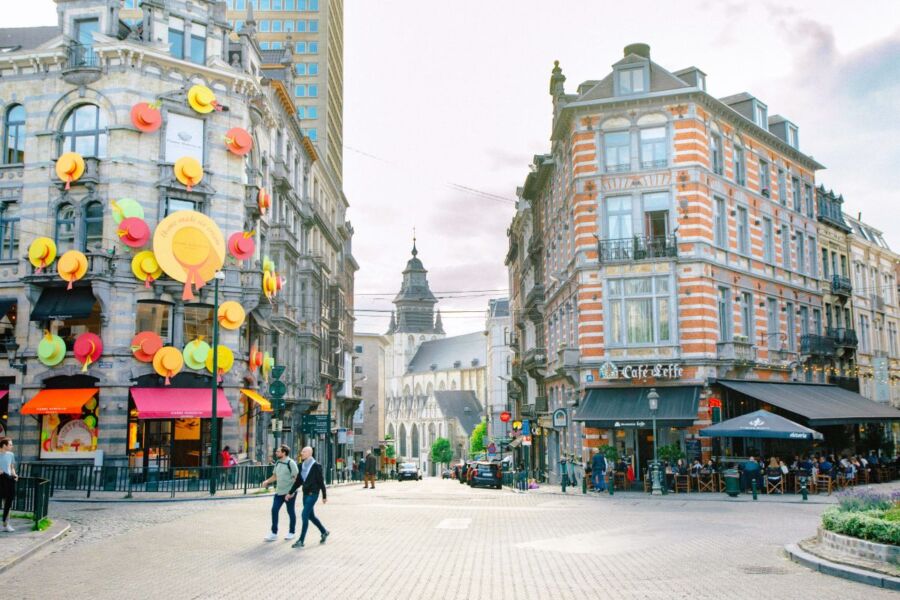
Brussels blends French and Flemish influences in its bilingual streets. The city buzzes with international diplomats and business people, creating a cosmopolitan atmosphere. Street art, comic book murals, and trendy neighborhoods like Saint-Gilles show Brussels’ creative spirit.
Bruges keeps alive traditional Flemish culture through its lace-making workshops and folklore museums. The city comes alive with chocolate shops, Belgian beer bars, and cozy cafes along its canals. Horse-drawn carriages still clip-clop through the historic streets, adding to the fairy-tale feel.
The Market Square hosts colorful festivals throughout the year, celebrating everything from chocolate to medieval traditions. Local artists still work in centuries-old techniques like diamond cutting and brewing.
Key Attractions
Both Brussels and Bruges showcase stunning architecture and historic landmarks that reflect Belgium’s rich cultural heritage.
Brussels Points of Interest
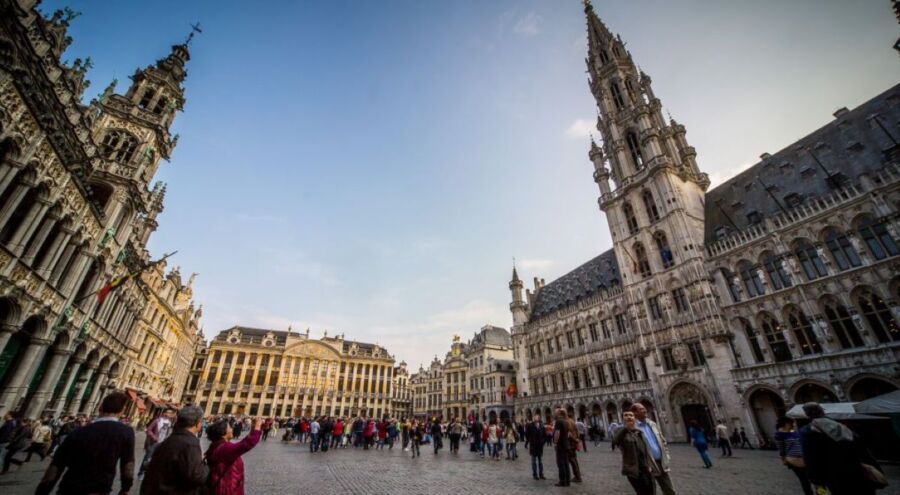
The Grand Place guided tour stands as the crown jewel of Brussels. This UNESCO World Heritage site features stunning Gothic and Baroque buildings, including the iconic Town Hall.
The quirky Manneken Pis statue draws tourists with its unique charm. This small bronze fountain shows a little boy doing his business, and locals dress him in different costumes throughout the year.
The Atomium towers over the city’s skyline. This massive steel structure, built for the 1958 World’s Fair, represents an iron crystal magnified 165 billion times. Visitors can explore its spherical pods and enjoy panoramic city views.
Bruges Must-Sees
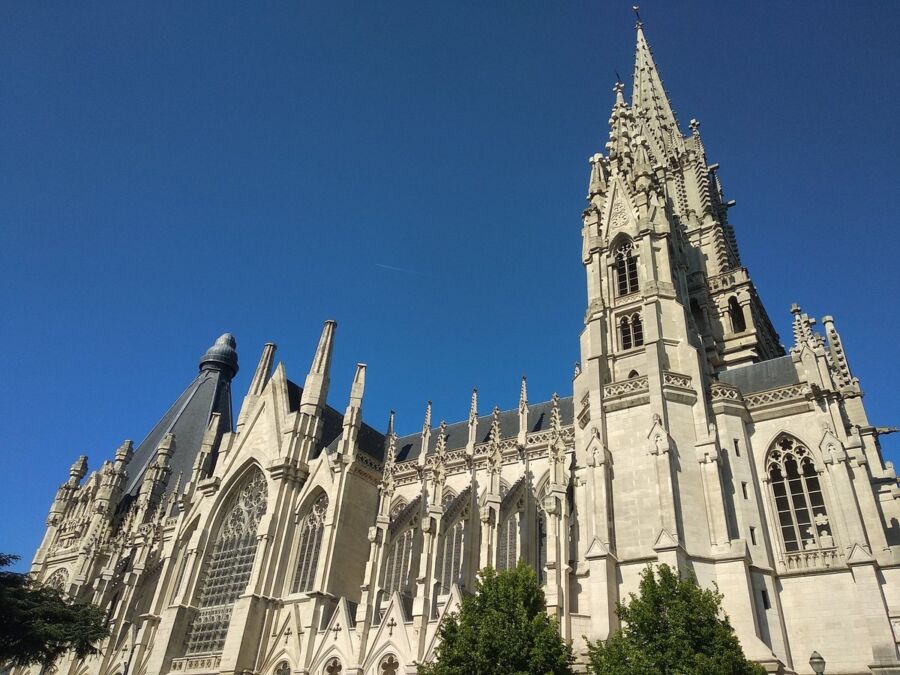
The medieval Markt Square sits at the heart of Bruges. This bustling plaza hosts colorful guild houses and the famous Belfry Tower, which visitors can climb for amazing views.
The Church of Our Lady holds artistic treasures, including Michelangelo’s Madonna and Child sculpture. Its 122-meter brick tower makes it one of Europe’s tallest brick buildings.
Bruges’ picturesque canals wind through the city like a medieval Venice. Stone bridges arch over waterways lined with preserved medieval buildings and weeping willows.
Canal boat rides offer a unique perspective of the city’s Gothic architecture and hidden gardens. These 30-minute trips pass under low bridges and past secret courtyards.
Culinary Experience
Belgian cuisine blends rich flavors with time-honored traditions. Both cities offer distinctive food scenes that showcase local specialties, from world-famous chocolates to fresh seafood.
Local Delicacies in Brussels

Brussels serves up classic Belgian dishes in settings from street-side stalls to fancy restaurants. The streets around Grand Place buzz with the smell of fresh Belgian fries, served in paper cones with dozens of sauce choices.
Don’t miss the Belgian waffles – crispy Liège waffles with caramelized sugar or fluffy Brussels waffles topped with whipped cream and fruit. Street vendors sell them warm throughout the city center.
Seafood lovers flock to restaurants in Sainte-Catherine for steamed mussels in white wine (moules-frites). The area’s historic fish market influences many local dishes.
The city’s chocolate shops display stunning pralines and truffles. Visit famous chocolatiers like Neuhaus and Godiva to sample their creations.
Gastronomic Adventures in Bruges

Bruges puts a medieval spin on Belgian cooking traditions. The city’s compact center holds countless chocolate shops where artisans craft pralines by hand.
Fresh North Sea shrimp and mussels appear on most menus. Try the shrimp croquettes, a local specialty that combines fresh seafood with crispy breading.
Beer is crucial to Bruges’ food culture. Many restaurants pair traditional Flemish stews with local brews. Popular spots like 2be Beer Wall offer hundreds of Belgian beers to taste.
Sweet treats fill shop windows along cobbled lanes. Local specialties include speculoos cookies and lace-thin butter wafers called kletskoppen.
Accommodation and Lodging
Both Belgian cities offer diverse places to stay, from cozy bed & breakfasts to luxury hotels. The main difference lies in the atmosphere and surroundings each city provides.
Staying in Brussels
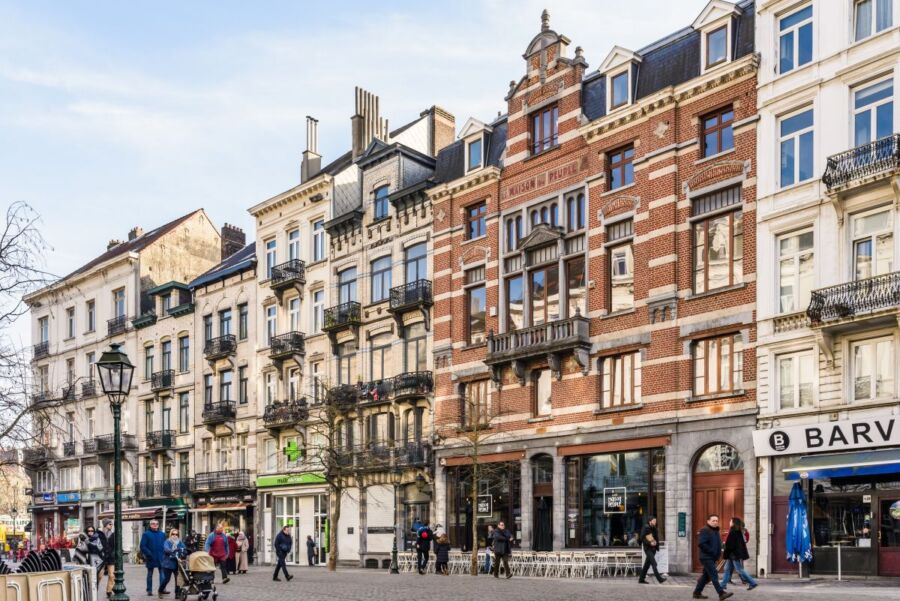
Brussels has tons of hotels and accommodations spread across its many neighborhoods. The city center near Grand Place tends to be pricier but puts guests right in the middle of the action.
Budget travelers can find good deals in the Saint-Gilles and Ixelles districts. These areas have plenty of boutique hotels and guesthouses at reasonable rates.
Business travelers often prefer the European Quarter. This area features upscale chain hotels with conference facilities and business amenities.
Bruges Hotel Offers
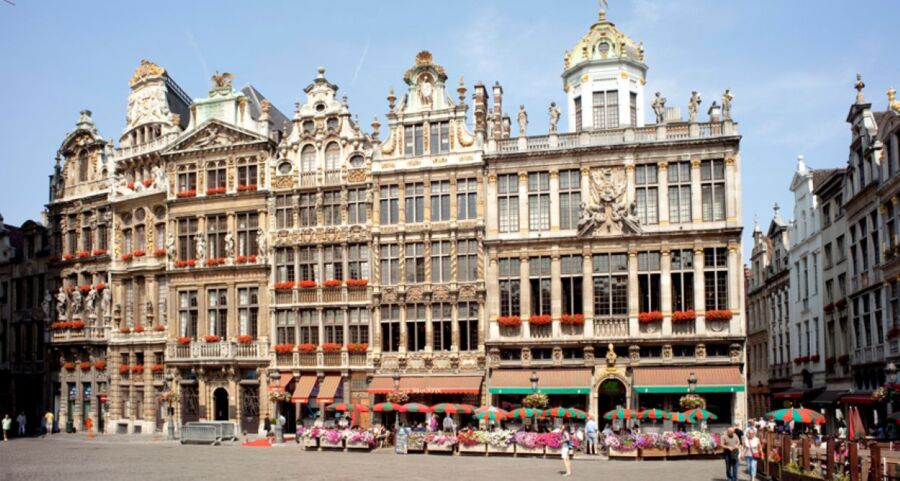
Many hotels in Bruges occupy restored medieval buildings, giving guests a truly unique experience. The canal-side properties are especially popular, though they fill up fast in peak season.
The area around Markt Square has charming family-run hotels in historic buildings. These spots often include breakfast with local specialties.
Quiet spots outside the city walls offer better value. Most are just a 10-15 minute walk from main attractions.
Couples love the romantic B&Bs near Minnewater Lake. These intimate properties usually have fewer than 10 rooms and provide personalized service.
Shopping and Leisure
Both Brussels and Bruges offer unique shopping experiences, from modern malls to historic markets. Each city has its own special charm when it comes to retail therapy and leisure activities.
Retail Therapy in Brussels
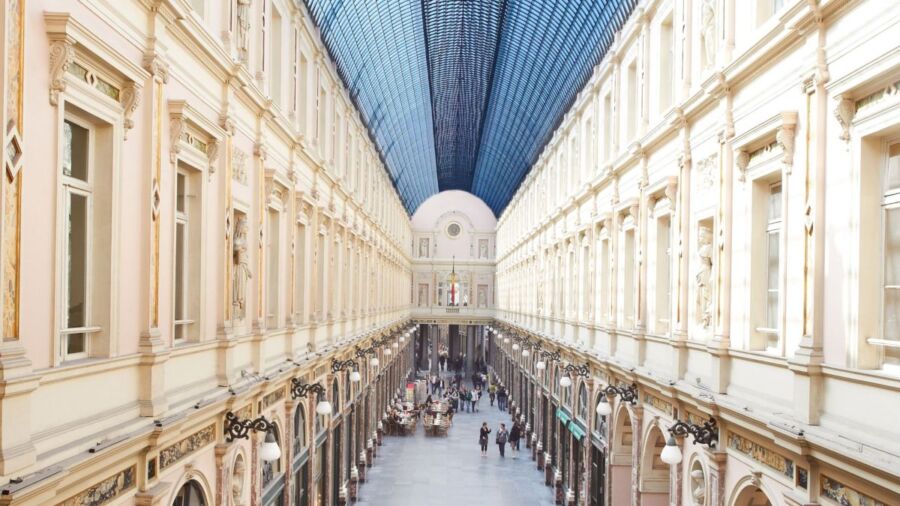
Brussels shines as a modern shopping destination with a mix of high-end boutiques and international brands. The Galeries Royales Saint-Hubert, a stunning glass-roofed arcade from 1847, houses luxury shops and Belgian chocolate makers.
The Rue Neuve is the city’s main shopping street, packed with familiar fashion chains and department stores. You’ll find everything from H&M to exclusive Belgian designers.
The Lower Town area near Grand Place features specialty shops selling Belgian chocolates, local crafts, and unique souvenirs. Many stores here offer free samples of their famous pralines.
Boutique Finds in Bruges

Bruges’s shopping scene focuses on artisanal goods and local specialties. The Markt square hosts weekly markets where vendors sell fresh produce, flowers, and handmade crafts.
The narrow lanes around Steenstraat feature charming boutiques selling Belgian lace, handmade chocolates, and traditional tapestries. The chocolate museum offers a sweet shopping experience with its gift shop full of local treats.
During winter, the Christmas market transforms Bruges into a magical shopping wonderland. Wooden stalls sell mulled wine, Belgian waffles, and handcrafted gifts.
Several breweries in the old town have shops where you can buy local beers and brewing memorabilia. De Halve Maan brewery’s store stocks rare Belgian brews you won’t find elsewhere.
Accessibility and Transportation
Both Brussels and Bruges offer different ways to explore their historic streets, with each city having its own unique transport systems and walking challenges.
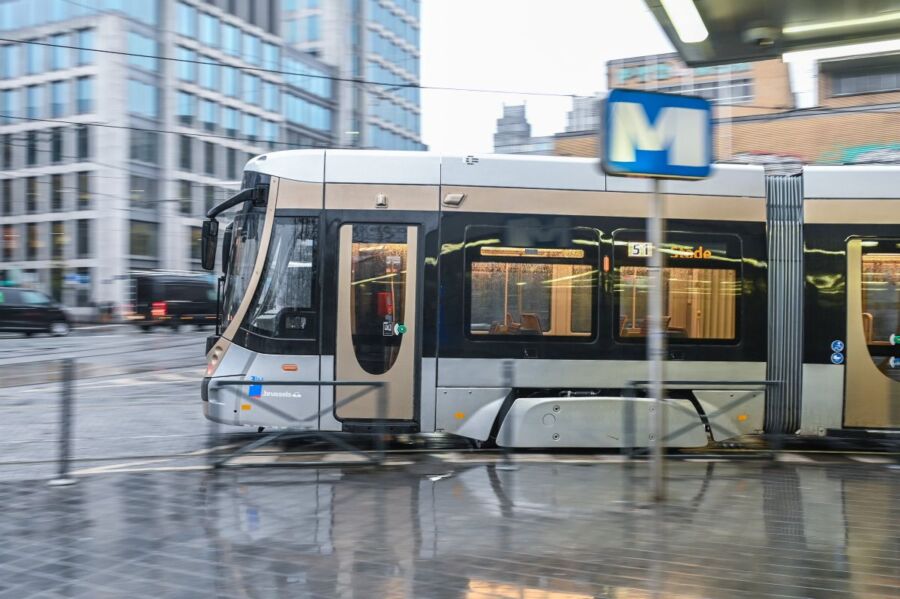
Brussels has one of Europe’s best public transit networks. The STIB-MIVB runs metros, trams, and buses that connect all major spots in the city. A single ticket works for all types of transport, making it simple to hop between attractions.
The metro system has 4 lines that run from 5:30 AM until midnight. Trains come every 3-5 minutes during busy times.
Many streets in the city center are flat and easy to walk. The main tourist areas have wide sidewalks perfect for exploring on foot.
Taxis and ride-shares are easy to find, especially near train stations and tourist spots. The streets follow a clear grid pattern, which makes finding your way around pretty straightforward.
Getting Around Bruges
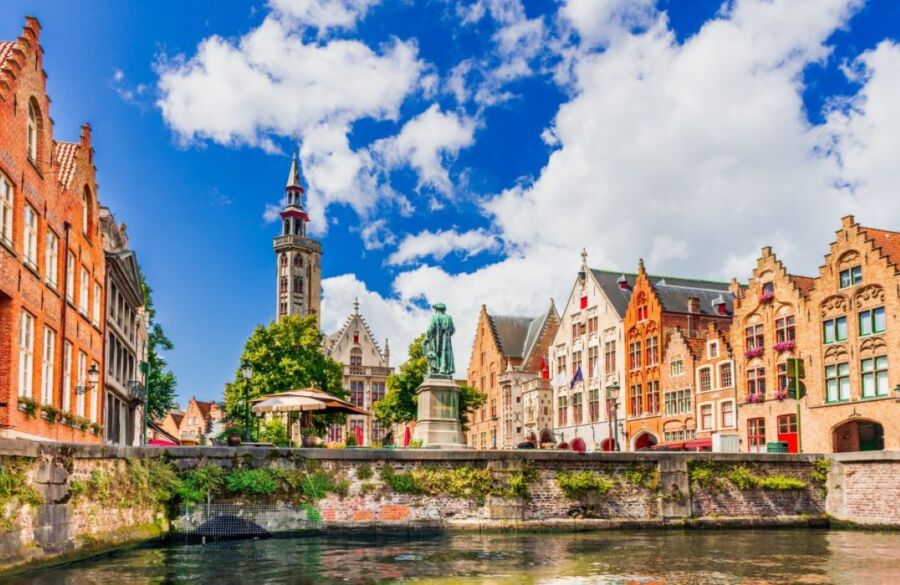
Bruges is small enough to walk across in about 30 minutes. The compact size makes it perfect for exploring on foot, though the cobblestone streets can be tricky in some spots.
The city has a good bus system that runs through the main areas. Buses come every 10-15 minutes and are great for reaching spots outside the center.
Canal tours give a different view of the city. These boat trips last about 30 minutes and show off the medieval buildings from the water.
Bikes are very popular in Bruges. You can rent them all over the city, and the flat terrain makes cycling easy. Just watch out for those cobblestones in the old town.
Seasonal Activities and Events
Brussels and Bruges transform through the seasons with distinct festivals, markets, and celebrations that showcase Belgian culture at its finest. Each city offers unique ways to experience local traditions year-round.
Festivities in Brussels
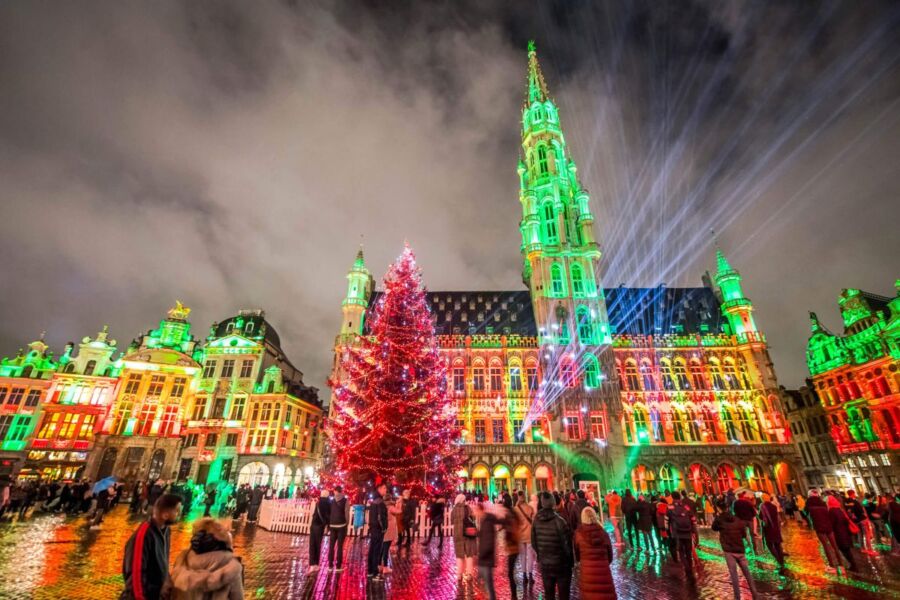
The Winter Wonders Christmas market lights up Brussels from late November through early January. The market spreads across Grand Place and surrounding streets with over 200 wooden chalets selling gifts, food, and mulled wine.
The famous Flower Carpet takes over Grand Place every August. This stunning display uses 600,000 begonias to create intricate patterns across the square.
Spring and Summer Events:
- Belgian Beer Weekend (September)
- Brussels Jazz Festival (May)
- Ommegang Medieval Festival (July)
- Brussels Summer Festival (August)
Bruges Seasonal Highlights
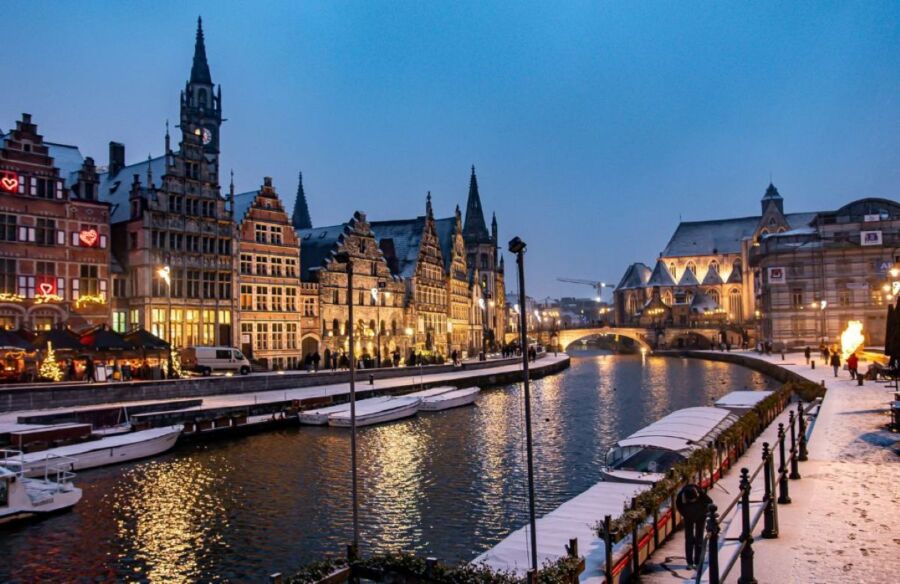
The magical Rosenhoedkaai canal area becomes extra special during winter evenings when lights reflect off the water. The Christmas Market at Market Square runs from late November through December with ice skating and Belgian treats.
Year-Round Activities in Bruges:
- Horse-drawn carriage rides through historic streets
- Canal tours (peak season April-October)
- Beer festivals in spring and fall
- Medieval processions and parades
Winter brings ice skating at the outdoor rink near Market Square. Spring sees the return of outdoor cafes along cobblestone streets. Summer brings evening concerts in various squares throughout the city.
Hidden Gems and Unique Experiences
Both Belgian cities hide amazing secrets beyond their famous attractions. These lesser-known spots offer magical moments away from tourist crowds.
Brussels’ Secret Spots
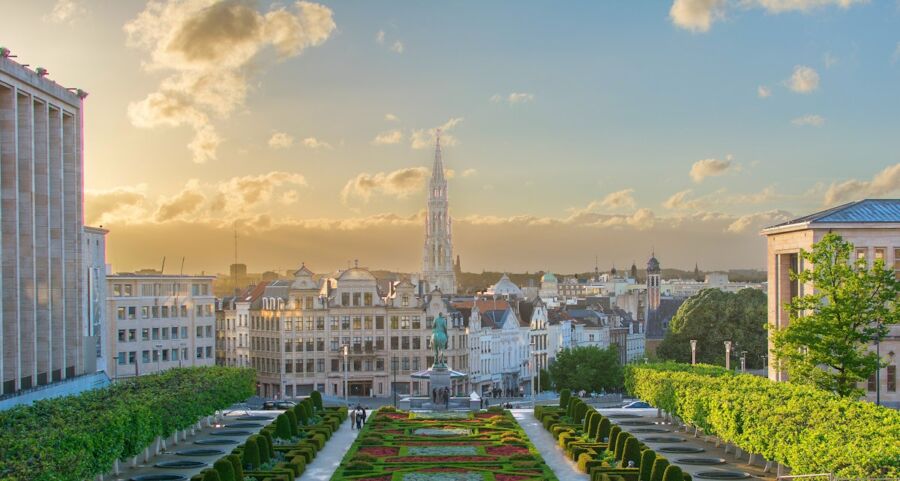
The Mont des Arts garden provides a peaceful escape with stunning city views. This hidden treasure connects the upper and lower parts of Brussels through beautiful terraced gardens and fountains.
The Saint Catherine neighborhood buzzes with local life. Its narrow streets house tiny art galleries and vintage shops where you can find one-of-a-kind Belgian souvenirs.
Cantillon Brewery gives visitors a rare peek into traditional Belgian brewing. This family-run spot still makes beer the same way they did 100 years ago.
Unexplored Bruges
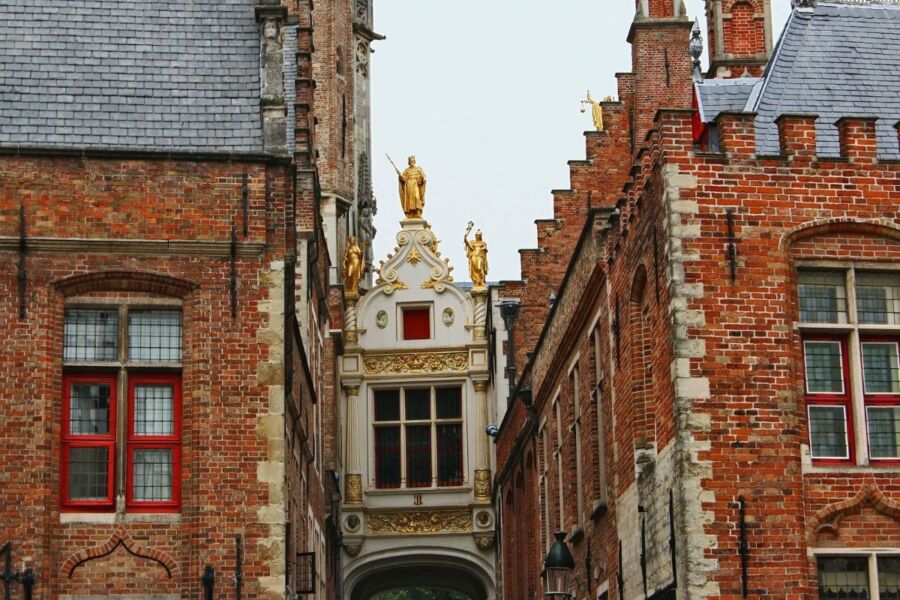
The peaceful Beguinage transport visitors back in time. This UNESCO site once housed religious women, and today its white-painted houses and garden courtyard offer a quiet place to reflect.
Rozenhoedkaai looks most magical at sunrise when few tourists are around. This iconic canal view becomes even more special when you have it mostly to yourself.
Behind Burg Square, tiny alleys lead to secret gardens and historic buildings. The Blinde-Ezelstraat (Blind Donkey Street) passes under the Town Hall, connecting to a hidden medieval courtyard.
The Gezellehuis museum showcases local poetry and art in a historic home. Its garden cafe serves traditional Flemish treats away from the busy Market Square.
Frequently Asked Questions
Both Brussels and Bruges offer unique travel experiences, with different transportation options, seasonal activities, and family-friendly attractions that shape visitor experiences throughout the year.
Which is a better destination for a day trip, Brussels or Bruges?
Bruges works better for day trips due to its compact size and walkable historic center. Visitors can see the main attractions in 6-8 hours.
The medieval architecture, canals, and chocolate shops create a perfect snapshot of traditional Belgium. Plus, the train station sits just a 10-minute walk from the city center.
How do the Christmas markets in Brussels compare with those in Bruges?
Brussels hosts larger Christmas markets spread across multiple locations, with the main hub at Grand Place featuring over 200 stalls and a stunning light show.
Bruges offers a more intimate Christmas market experience in Market Square. The medieval backdrop and horse-drawn carriages create a magical winter atmosphere.
What are the main differences travelers find between visiting Bruges and Brussels in December?
Bruges gets quite crowded during December weekends but maintains its fairytale charm with festive decorations along narrow cobblestone streets.
Brussels spreads out the winter festivities across different neighborhoods. The city feels more modern and cosmopolitan even during the holiday season.
What is the most efficient way to travel from Brussels to Bruges by train?
Direct trains run every hour from Brussels Central Station to Bruges, taking about 1 hour. Tickets cost around €15-20 one-way.
Buy tickets in advance during peak tourist season and holidays. First-class upgrades often cost just a few euros more and guarantee a seat.
For families traveling with children, should they opt for a visit to Bruges or Brussels?
Brussels offers more kid-friendly attractions like the Comic Strip Center, Mini-Europe, and the Natural Sciences Museum.
Bruges appeals to families through canal boat rides, the Chocolate Museum, and climbing the Belfry Tower. The smaller scale makes it easier to explore with young children.
Considering all factors, which city is recommended as the best home base while exploring Belgium?
Brussels serves as an ideal base thanks to its central location and excellent rail connections to other Belgian cities.
The city offers more accommodation options at better prices. Plus, the international airport and train links make day trips simple to plan.
Many restaurants stay open late in Brussels, unlike Bruges where things quiet down after day-trippers leave.

